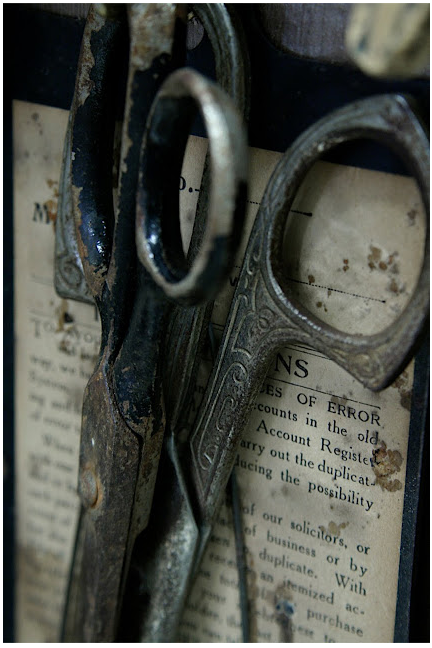 (photo from LivingVintage)
(photo from LivingVintage)
Time to go through your collection of scissors, rotary cutters and other cutting/sharp tools. Eventually, even the best cutting tools, through repeated use, develop nicks or just lose their sharp edge. Working with dull or damaged tools can be frustrating and dangerous. These quilt studio staples need to be kept in good working order so that they perform well when needed.
- Have your scissors professionally sharpened yearly.
- Keep your scissors/rotary cutters clean. Periodically wipe the blades with a soft cloth, making sure to remove lint in hard to reach areas. Also, do not clean with water as it will cause rust.
- Avoid leaving your scissors on your ironing board when you have been using the steam setting as the board retains moisture much longer than you think.
- Do not force a cut when it comes to scissors, as it may cause the blades to come out of alignment.
For more tips on cleaning and keeping your tools sharp check out TheQuiltersMessageBoard.
Need your scissors or rotary cutter sharpened right away? Meghan at the Sewing Geek has a method using a common household items that just might work in a pinch. Let us know what you think. 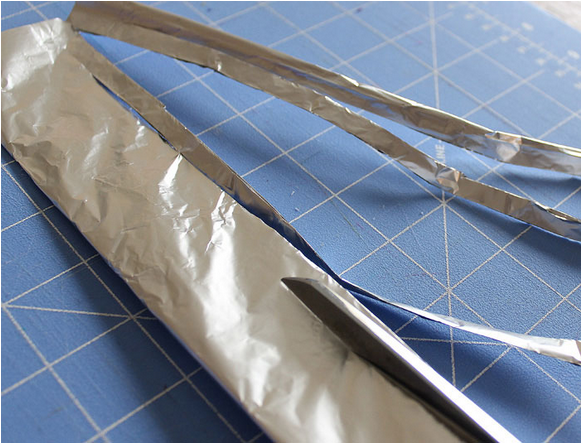
Once your sorting and sharpening has been completed, decide which is the best way for you to keep cutting tools organized. As you are trying to re-think your space, think about the area you currently work in, or are trying to achieve this year. Remember, we are still in the clearing/cleaning out phase, and you can always change your mind. But, it's good to have an idea of what works best for YOU! What space are YOU happiest in? What is your stress free and most creative dream quilting studio? This is what we are trying to help you achieve.
- Do you perfer a clean and visually clutter free space with tools out of sight?
- Do you prefer tools to be out and within easy reach on your cutting surface?
- Does your entire workspace allow for large amounts of horizontal or vertical storage?
Vertical Storage:
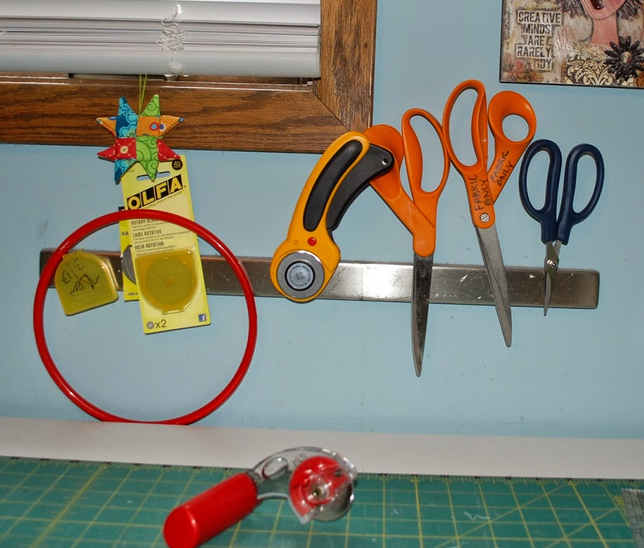
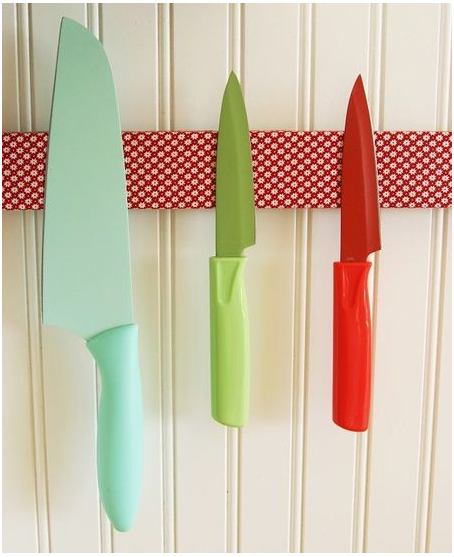
TracyW from Minneapolismqg magnetic knife holder. Want something more colorful? Check out Serena's fabric covered magnetic holder at TheFarmChick.

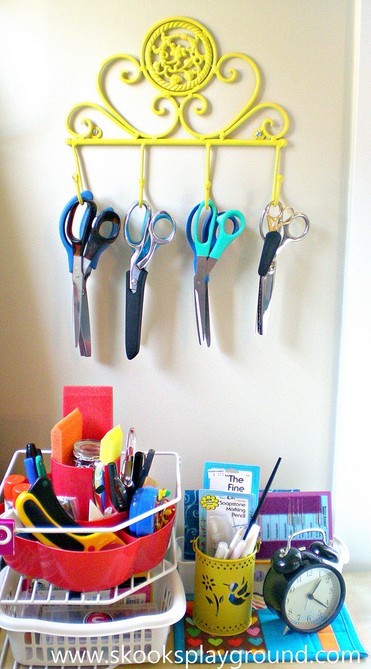
Or how about using the old Julia Child's pegboard organization trick? Outline each tools out with a colorful marker. Every tool then has a home, and you certainly know when one has gone astray. Heyletsmakestuff has a quick tutorial to make your own custom tool pegboard. SkooksPlayground uses a spray painted a discount store rack to hold her assorted size scissors. A corner two tier plate unit with baskets offers storage of a number of other items including her rotary cutter.
Tabletop Storage:
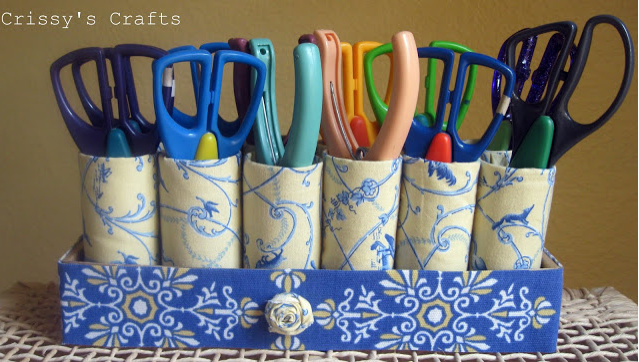
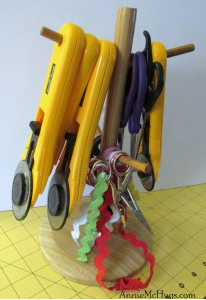
Got toilet paper holders? Crissy's Crafts shows you how to recycle them into a cute place to sort your smaller scissors. Not feeling particularly crafty? AnnieMcHugs uses two mug trees (one for fabric cutting tools and the other for paper cutting tools).
Hidden Storage:

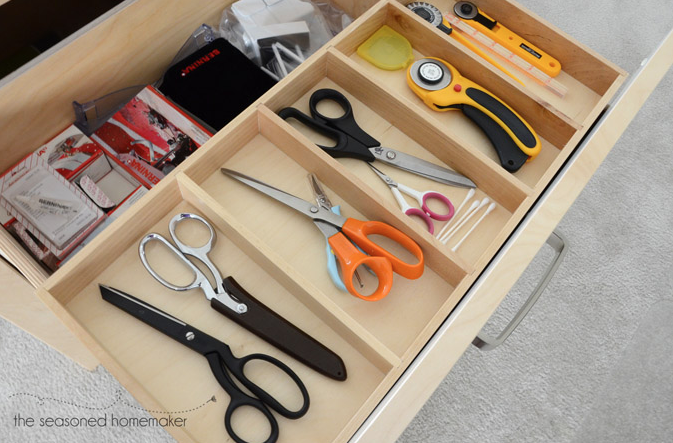
(photo from MarthaStewart.com)
If you prefer and have the space, you can use a utensil drawer system like Martha Stewart does to keep these items out of sight (and away from little helping hands). The SeasonedHomemaker also uses this system in her studio.
Tip: Rubberized shelf liners also help to keep things from shifting around as you open and close the drawers. Use the left over bits for supporting your hands while machine quilting as Philippa Naylor does (Show 606).




.jpg)



so are sturdy clear vases. I try very hard to have a place for everything, and always return it to that place at the end of my sewing day
RSS feed for comments to this post